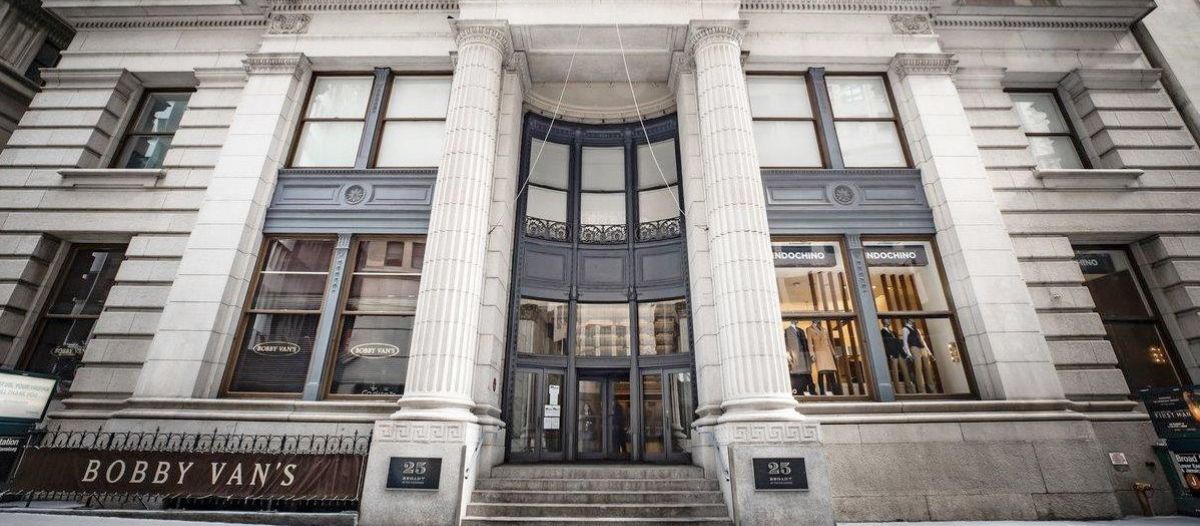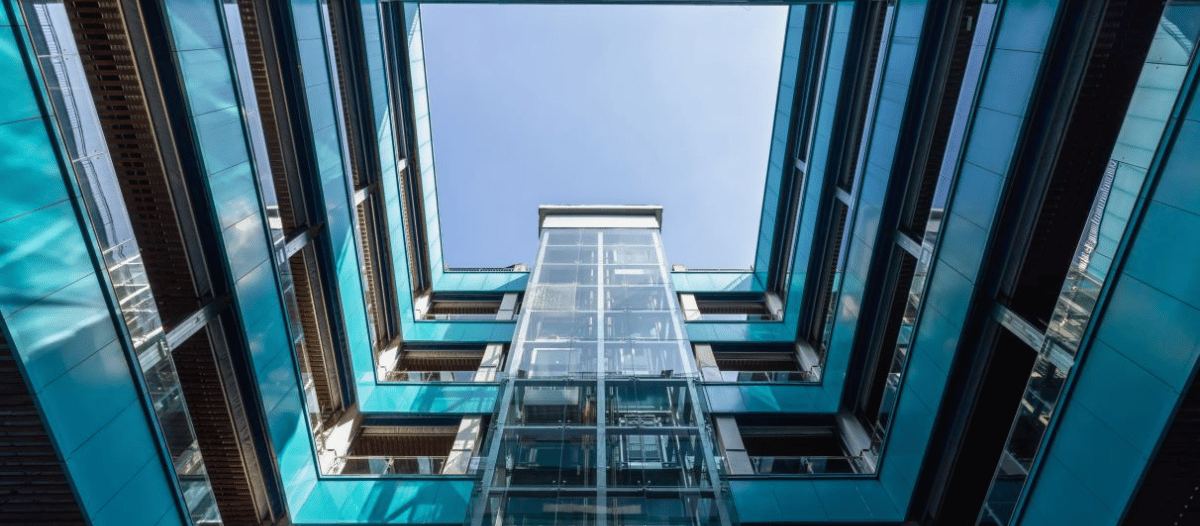Window Inserts
Achieving energy efficiency in historic buildings

Many historic buildings cannot and should not be torn apart to have their original infrastructure replaced by new, higher performing materials. Yet the need for energy efficiency is not just popular, it is necessary.
Denver, Colorado USA is a leading city when it comes to green initiatives, such as the Denver Green Roof Initiative, but the city’s love for historic preservation is not at odds with its concerns around the environment. They are blended. This makes energy efficiency upgrades, such as interior storm windows, also known as window inserts, perfect for both business and residential buildings. However, a 2020 Northwest Energy Efficiency Alliance report suggests there is little awareness of the full breadth of window insert, or in this case secondary window, products and manufacturers that are available to the commercial market today. This means window inserts are less frequently considered for window upgrade projects or building renovations that require some form of window improvement.
The National Institute of Building Science’s Whole Building Design Guide Historic Preservation Subcommittee reinforces the idea that historic window replacement is rarely the only option for meeting building performance goals. In fact, they suggest the most environmentally responsible approach is to maintain, repair and retrofit historic windows for improved performance, whenever possible, as opposed to replacing them.
Enacted by Denver’s City Council in 1967, the Denver Landmark Preservation helps preserve the well-loved character of the city and its neighborhoods. The ordinance helps preserve, enhance and encourage the use of structures and areas of the city with historical, architectural and cultural significance.
Similarly, the Pennsylvania State Historic Preservation Office (PA SHPO) recently introduced a multi-year initiative that aims to collect baseline survey information about thousands of older and historic places across the state that are underrepresented in statewide inventory, such as recreational properties, fraternal buildings and churches. In the first year, PA SHPO added 7,500 properties to Pennsylvania’s Historic Places Inventory and expects to add approximately 19,500 historic and archaeological resources in 2022 and 2023.
The U.S. federal government supports the importance of retaining our country’s historic homes and buildings, with the Federal Rehabilitation Tax Credit, also known as the Historic Preservation Tax Credit. This tax credit is specifically for those who preserve, rather than replace, historical buildings and for residential as well as commercial buildings.
It’s worth noting that such preservation initiatives aren’t limited to the U.S. The Modern Heritage program, for example, represented Dubai’s first push towards historic preservation, aiming to protect the mid-20th century architecture that ushered in the city’s rapid development.
This can feel counter-intuitive: updating historic buildings to make them more energy efficient and therefore desirable to new occupants. How do building managers keep current tenants happy? How do property owners manage cost? How does one factor in resale value?
Turning to windows for energy efficiency updates
Compared to historic windows, many modern replacement windows have a relatively short lifespan and are made of glazing assemblies that cannot easily be repaired and can lead to a cycle of disposal and waste. This can conflict with both sustainability goals for protecting the environment and the Secretary of the Interior Standards for protecting cultural resources.
Forty percent of a building’s energy is consumed by heating and cooling, so checking air sealing and insulation is the first step toward energy efficiency. Regulating temperature when you have historic homes with older windows is challenging and many property owners assume window replacement is the best option. However, replacing windows in old homes or historical buildings can rob them of their unique character, which can also decrease the value of the structure. Alternatively, window inserts can be custom made to address the individual needs of a building manager or homeowner, while also preserving the integrity of historic structures and preventing old windows from being tossed into a landfill.
Old windows come with old-growth wood frames and because old-growth wood grew slowly, compared to the rapid growth wood that is cultivated for construction today, its rings are closer together. This results in a denser wood that can last for generations, when cared for or restored properly.
Exploring storm windows: Exterior vs. interior
Storm windows add insulation to help regulate temperature without requiring window replacement construction. They also keep the original windows where they belong, adding to the building’s value, but when it comes to options, there are some significant differences between exterior and interior storm windows.
Exterior storm windows detract from the aesthetic and curb appeal of a building, attaching to the window frame using wood or aluminum casing via screws and caulk. This not only harms the appearance of the building but can cause physical damage to the building as well.
Interior storm windows can provide the same energy savings as exterior storm windows without causing physical damage or affecting the curb appeal. Interior storm windows can be custom made for windows and pressed into the window frame. They increase resale value because the upgrade, and energy savings, stay with the building.
Energy efficiency in a historic New York City building
Project Manager Joseph Casillo wanted to preserve what made his landmark building beautiful: moldings, fixtures, wavy glass and old-growth wood frames. However, modern efficiencies save money and bring convenience to tenants, which ultimately led Casillo to incorporate interior window inserts into his New York landmark building. New York has stricter landmark laws in place than some cities, such as Denver, but he faced many of the same concerns.
The windows in this landmark building were over 100 years old and let drafts and grime in, in addition to New York city noise. Joseph wanted to provide comfort for his tenants without having to rip out, restore and reinstall each window in his multi-family building. Interior window inserts required no construction and adhered to all of New York’s Landmark Preservation Commission regulations.
They cannot be seen from the outside and are barely visible from the inside. He says the tenants have noticed a difference in drafts and noise, and he expects the “green” addition will help facilitate sales.
Existing window coverings or other hardware obstructions inside window frames can sometimes block the installation of window inserts, adding complexity to an installation. A great example of overcoming this objection includes the addition of window inserts in Portland, Oregon’s historic Olympic Mills building.
Noise-canceling window inserts
A marketing firm was looking for a new office space when they came across Olympic Mills building. Though the space was the perfect size – being next to train tracks was a big concern. The property manager realized the distraction of the train is not unique to this marketing firm and would most likely be a concern for anyone interested in the office space. Property Manager Mike Larkin identified window inserts as a solution as they reduce 70 percent of outside noise and stop drafts.
Plus, the window inserts offer flexibility for tenants who do not want to drown out the train noises, such as being easily reversable and ready to store based on preference. This customer needed to hire additional carpentry at a relatively high investment in relation to the cost of the window inserts. However, the property manager’s return on investment analysis showed increased lease rates would quickly cover the added expense. The response the building received influenced the property manager to upgrade the entire west side of the building with window inserts.
Storm windows in a treasured building
This older apartment building in the middle of a rich cultural downtown area was suffering from too much noise and not enough energy efficiency. The property managers were tasked with finding storm windows in Richmond, Virginia, USA that wouldn’t harm the history held inside its walls and windows.
Historical buildings suffer the noise, activity and weather that comes with a growing town like Richmond, Virginia. An apartment building located in the middle of a busy, cultural downtown area housed a furniture store whose name is still painted across the bricks. The building was tasked with finding storm windows while prioritizing the history within its walls and windows. The majority of tenants were students attending Virginia Commonwealth University and the Medical College of Virginia, which meant when they weren’t enjoying the social perks of the town, they needed a quiet place to focus on work.
The Mezzo Lofts manager chose window inserts instead of replacing the windows completely. Theses window inserts not only blocked the noise from Broad Street, the iconic main street in Richmond, but kept the cold drafts out, resulting in less heat being used in each apartment and a smaller bill at the end of each month. The window inserts helped the building achieve the ultimate goal of preserving the structure’s character, while also creating a more relaxing place for students to live and lowering the energy bill for the managers.
When considering whether to replace windows, the inconvenience caused by construction also warrants careful consideration from building managers. It is one thing for a single family to tolerate construction in their home, but it’s quite another to ask that of renters. Window inserts can provide a quick, clean way to address loud noises and drafty windows, without adding construction mess or inconvenience to a renter’s living space.
The convenience factor of using window inserts rather than conducting a window replacement project was a big factor in Mezzo Lofts’ decision. The property manager said that “the installation was seamless… there were no resident complaints, and the process was completed sooner than expected.”
In conclusion
Often, balancing the preservation of historical buildings without replacing the original windows can feel like a complicated challenge. Today, there are increasingly creative options for historic home and building owners to reduce the carbon footprint of the building, while providing a quiet, healthy and enjoyable space for themselves or their tenants. Window inserts are one of those options.

Read more on Project Management and Sustainability or related topics Asset Management and Retrofitting
Explore All FMJ Topics









